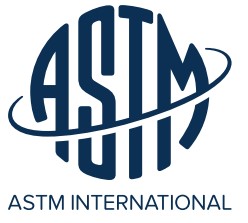ASTM International
Contents |
[edit] Introduction
ASTM International was originally referred to as the American Society for Testing and Materials. In 2001, it became an international standards organisation that creates and delivers voluntary technical standards for products, materials and services. There are currently more than 12,000 ASTM International standards that apply to systems and components manufactured around the world.
[edit] History
The precursor to ASTM International was the American Section of the International Association for Testing Materials, launched in 1898 by scientists and engineers intent on resolving structural issues occurring in railroads.
The earliest efforts of the organisation were led by Charles Dudley an employee of the Pennsylvania Railroad. Dudley’s role at the railroad was to research materials the company relied on for its operations. Consequently, the first standard was one for steel that could be used to manufacture rails less prone to breakage.
As the first standards organisation, ASTM International was established before the British Standards Institution (BSI) and the International Organisation for Standardisation (ISO). These organisations frequently incorporated or adopted ASTM standards, especially in areas such as steel, oil and other industrial materials.
In 2009, ASTM International began to certify services for products and personnel, which led to a partnership in 2016 with the Safety Equipment Institute (SEI). This organisation also works with labs and manufacturers to offer certifications.
Currently, ASTM members come from more than 140 countries.
[edit] Compliance
Compliance with ASTM standards is not mandatory in most instances. However, this can change based on the circumstances related to adoption. This happens most frequently around issues associated with safety, particularly when dealing with cases involving large organisations (such as high profile corporations or government entities). They are also frequently adopted for products or services used by (or around) children.
[edit] Example
On 8 July 2020, ASTM International released a proposed standard to evaluate the tensile performance of fibre-reinforced concrete (FRC). The proposed standard (WK73384) will be useful to contractors, testing agencies and researchers.
This standard and others play a role in product development and safety in more than 90 industry sectors:
- Additive manufacturing (including 3D printing).
- Chemical standards (including research, production, and environmental safety of products manufactured from rubber, plastics and raw materials).
- Construction standards supporting the building industry.
- Consumer product standards.
- Energy standards (including research around renewable energy and climate change).
- Green construction.
- Healthcare services, products and technology.
- Metals (including steel, copper, aluminium and others associated with infrastructure construction projects, consumer items, equipment and machines).
- Safe and sustainable highways (including quality and performance for beneficial returns on infrastructure investments).
- Sustainability (including standards that promote cleaner air and water; eco-friendly homes and office buildings; enhanced waste management and recycling programmes; improved environmental assessments and so on).
- Testing programmes.
- Textile standards (including home furnishings, vehicles, mobile phones and more).
[edit] Related articles on Designing Buildings Wiki
- ASTM International architectural model program standard E3223.
- British Standards Institution.
- Construction products regulations.
- International Organisation for Standardisation ISO.
- Standardisation.
- Standards in the construction industry.
- Testing, inspection and certification (TIC) market.
- Underwriters Laboratories UL.
Featured articles and news
Homes England creates largest housing-led site in the North
Successful, 34 hectare land acquisition with the residential allocation now completed.
Scottish apprenticeship training proposals
General support although better accountability and transparency is sought.
The history of building regulations
A story of belated action in response to crisis.
Moisture, fire safety and emerging trends in living walls
How wet is your wall?
Current policy explained and newly published consultation by the UK and Welsh Governments.
British architecture 1919–39. Book review.
Conservation of listed prefabs in Moseley.
Energy industry calls for urgent reform.
Heritage staff wellbeing at work survey.
A five minute introduction.
50th Golden anniversary ECA Edmundson apprentice award
Showcasing the very best electrotechnical and engineering services for half a century.
Welsh government consults on HRBs and reg changes
Seeking feedback on a new regulatory regime and a broad range of issues.
CIOB Client Guide (2nd edition) March 2025
Free download covering statutory dutyholder roles under the Building Safety Act and much more.
Minister quizzed, as responsibility transfers to MHCLG and BSR publishes new building control guidance.
UK environmental regulations reform 2025
Amid wider new approaches to ensure regulators and regulation support growth.
BSRIA Statutory Compliance Inspection Checklist
BG80/2025 now significantly updated to include requirements related to important changes in legislation.























